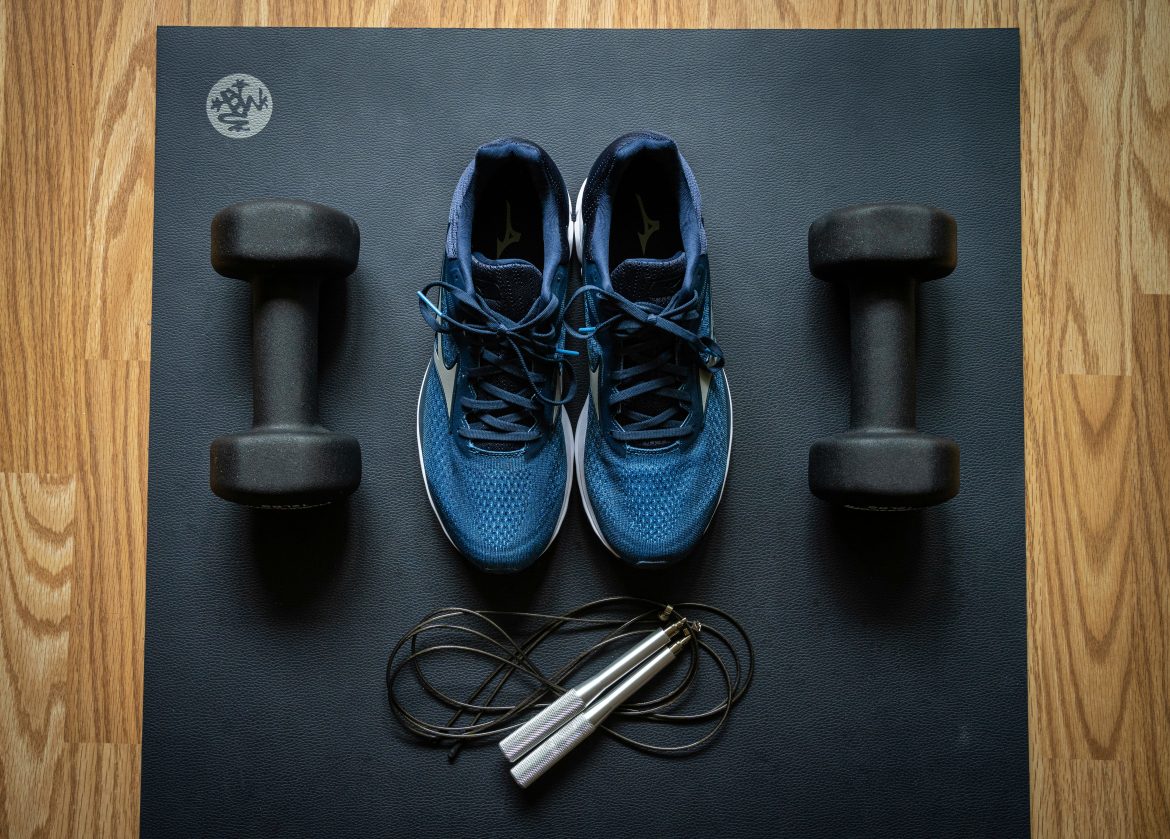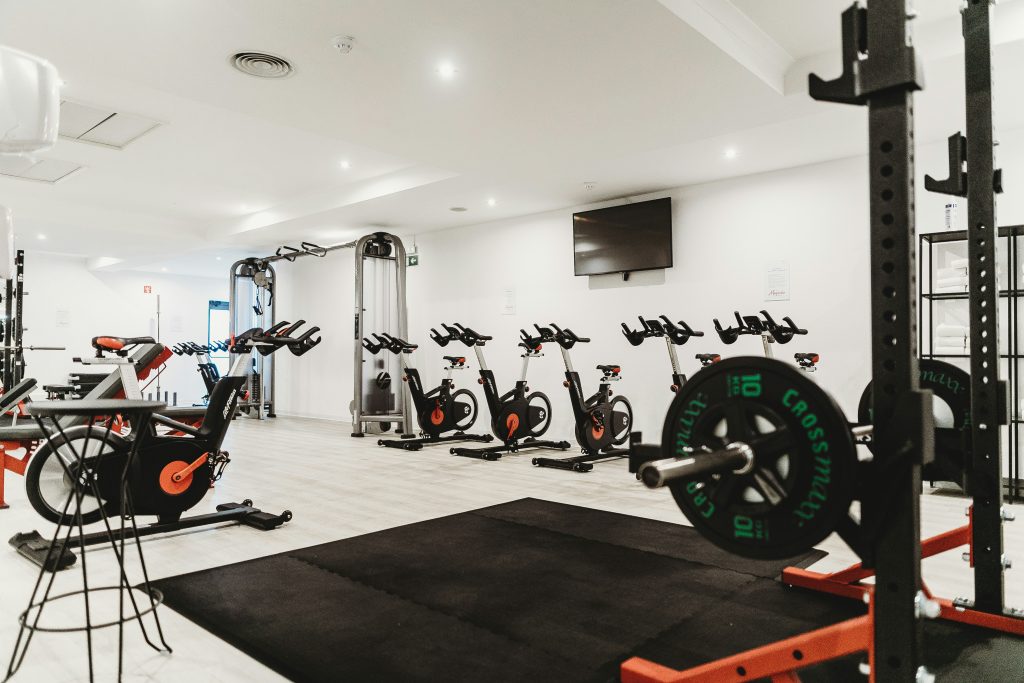Starting a fitness routine is a significant commitment that involves adopting new habits and routines. Fitness0.com provides comprehensive guidance to beginners, offering structured steps to initiate their fitness journey effectively and efficiently. This guide ensures beginners are well-informed and prepared, providing them with the necessary tools and knowledge to begin their fitness regimen.
Initiating a fitness routine involves more than just setting a workout schedule or selecting random exercises; it requires an understanding of the fundamental principles of fitness, including the relationship between different types of workouts, nutrition, and overall well-being. Fitness0.com serves as a resource to simplify the complexities of fitness, making it more accessible and manageable, especially for those just starting out.
“Did you know that starting a fitness routine can improve not just your physical health but also your mental well-being and productivity?”
This guide is tailored to address every critical aspect of beginning a fitness routine. It is structured to provide knowledge, strategies, and insights necessary for a well-informed start to a fitness regimen. The guide covers:
- Understanding Fitness Basics: This section provides an introduction to the essential principles of fitness and explains how to set realistic and achievable goals. It lays the groundwork for a comprehensive understanding of fitness and the right approach to it.
- Crafting Your Workout Plan: It delves into creating a workout routine that matches an individual’s fitness level and goals, emphasizing the importance of a balanced and comprehensive approach to fitness.
- Essential Fitness Equipment: This part discusses the necessary equipment for starting a fitness routine, focusing on cost-effective and space-efficient solutions, and providing practical advice for setting up a conducive workout environment.
- Nutrition and Fitness: It highlights the relationship between diet and exercise, offering basic nutritional guidelines and meal planning tips to ensure the body is properly nourished for physical activities.
- Tracking Progress & Staying Motivated: This section suggests methods for monitoring fitness progress, setting and achieving milestones, and strategies to stay motivated, aiming to help individuals overcome common challenges and maintain momentum in their fitness journey.
As readers navigate through this comprehensive guide, they are presented with a structured and informative approach to beginning their fitness journey. Fitness0.com aims to ensure that this journey is not only successful in achieving fitness goals but also enriching and fulfilling. The guide encourages readers to engage with each section actively, setting the stage for a well-informed and successful start to their fitness journey. The path to fitness is not solely focused on the outcome; it’s about the knowledge gained and the personal growth experienced with each step forward.
Understanding Fitness Basics
Fitness Fundamentals: Terminologies and Principles
Initiating a fitness routine requires a firm grasp of essential fitness terminologies and principles. Understanding key terms such as ‘cardiovascular endurance’, ‘aerobic’, and ‘anaerobic’ exercises is fundamental. These terms are critical for interpreting workout guides, effective communication with trainers, and making informed decisions about personal fitness routines. The principles of fitness, including progression, specificity, and overload, are key to developing an effective workout plan, ensuring the achievement of fitness goals in a safe and structured manner.
Types of Exercises: Cardio, Strength, Flexibility
Fitness encompasses a variety of exercises, each serving distinct goals and preferences. Cardio exercises focus on increasing heart rate and improving heart and lung health. Strength training aims at building muscle mass and enhancing physical strength. Flexibility exercises are vital for a balanced fitness routine, improving the body’s range of motion, reducing injury risk, and alleviating stress and tension.
Did you know that strength training can increase resting metabolism by about 7% and help reduce fat by up to 4 pounds within 10 to 16 weeks, without cutting calories
| Exercise Type | Primary Benefit | Example Activities |
|---|---|---|
| Cardio | Improves cardiovascular health, endurance | Running, Swimming, Cycling |
| Strength | Builds muscle mass, enhances strength | Weight Lifting, Resistance Bands, Bodyweight Exercises |
| Flexibility | Increases range of motion, reduces injury risk | Stretching, Yoga |
Goal Setting: SMART Goals for Fitness Beginners
Effective goal setting is a critical component of a successful fitness routine. SMART goals provide a structured and efficient approach to setting and achieving fitness objectives. Setting SMART goals offers a clear direction and serves as a motivational tool throughout the fitness journey, ensuring a well-informed approach to fitness, empowering individuals to make confident and effective decisions regarding their health and wellness.
Crafting Your Workout Plan
Assessing your fitness level is a critical first step in creating a workout plan that aligns with your personal health and fitness goals. This assessment involves evaluating cardiovascular fitness, muscle strength and endurance, flexibility, and body composition. Using tools and tests, from simple at-home exercises to comprehensive professional assessments, helps establish a personal baseline for tracking your progress.
Balancing Different Types of Workouts
Incorporating a mix of cardiovascular, strength, and flexibility workouts is crucial for a balanced and effective fitness routine. Ensuring a variety of exercises prevents monotony, maximizes health benefits, and minimizes injury risks.
“A study from the American College of Sports Medicine found that a balanced workout routine can reduce the risk of sports injuries by over 25%, highlighting the importance of a well-rounded fitness approach.”
- Cardiovascular Training: Improves heart and lung health, ideal for endurance building and calorie burning. Examples: Running, Cycling, Swimming.
- Strength Training: Builds muscle strength, enhances metabolism, and increases bone density. Examples: Weightlifting, Resistance Band Workouts, Bodyweight Exercises.
- Flexibility Training: Increases joint mobility, reduces injury risk, and promotes muscle recovery. Examples: Yoga, Stretching, Pilates.
Creating a Sustainable Routine
The effectiveness of a workout plan depends on its sustainability and adaptability. A sustainable routine accommodates your lifestyle, evolves with your fitness level, and includes rest and recovery. Progressive overload is a key principle, ensuring continual improvement without burnout or injury. Adjusting the plan based on feedback from your body is crucial for maintaining progress and achieving fitness goals.
Essential Fitness Equipment
Selecting the right equipment for a home gym involves identifying items that support your fitness goals and fit your available space. Key pieces of equipment like adjustable dumbbells, yoga mats, and resistance bands are versatile and space-efficient. For cardiovascular workouts, compact equipment like treadmills or stationary bikes can be valuable. Stability tools such as balance balls or wobble boards enhance core workouts and improve balance, diversifying your fitness regimen.
“Regular exercise equipment maintenance can increase the lifespan of your gear by up to 50%, ensuring your investment in fitness pays off in the long term.”
Cost-Effective Equipment Choices
Affordable fitness equipment does not have to compromise quality. Prioritizing essential items and seeking durable products can lead to significant savings. Simple tools like jump ropes, kettlebells, and pull-up bars are budget-friendly and can greatly enhance your workout.
| Equipment Type | Benefits | Approximate Cost Range |
|---|---|---|
| Adjustable Dumbbells | Versatile, Space-saving | $50 – $300 |
| Resistance Bands | Low-cost, Great for strength and flexibility | $10 – $50 |
| Yoga Mat | Essential for floor exercises, Easy storage | $20 – $100 |
| Jump Rope | Excellent for cardio, Highly portable | $5 – $50 |
| Kettlebell | Versatile for strength training | $20 – $200 |
Maintaining and Storing Equipment
Regular inspection and cleaning of fitness equipment extend its lifespan and ensure safe workouts. Proper storage solutions organize your space and make workouts more convenient. Wall mounts, storage racks, and designated cabinets help keep your equipment in good condition and readily accessible.
Nutrition and Fitness
Nutrition plays a significant role in physical performance and recovery. Macronutrients and micronutrients are crucial for energy, muscle repair, and various bodily functions related to fitness. Adequate hydration is also essential for temperature regulation, joint lubrication, and nutrient transport during workouts.
Meal Planning and Prepping for Beginners
Meal planning and prepping are vital for maintaining a consistent, balanced diet that aligns with fitness goals. It involves determining nutritional needs, planning balanced meals, and preparing food in advance. This practice ensures dietary consistency and prevents unhealthy eating habits.
Did you know that consuming protein within 30 minutes after a workout can significantly enhance muscle recovery and growth.
- Assess Your Nutritional Needs: Determine macronutrient requirements based on fitness goals and activity levels.
- Plan Your Meals: Create a weekly meal plan with a balance of carbohydrates, proteins, and fats.
- Prepare in Advance: Cook and portion meals for the week to ensure consistency and avoid unhealthy choices.
- Monitor and Adjust: Regularly review and adjust the meal plan based on progress and feedback.
Supplements: What You Need to Know
Supplements can be a valuable addition to a fitness routine, providing essential nutrients that might be challenging to obtain solely from diet. However, it’s crucial to use supplements judiciously and choose products from reputable brands that have undergone third-party testing for quality and purity.
Tracking Progress & Staying Motivated
Monitoring fitness progress is essential for evaluating and tailoring your workout plan. Fitness apps and trackers provide insights into your health and fitness status, while maintaining a workout journal documents your exercises, sets, reps, and physical and emotional responses to workouts.
“Studies show that individuals who track their progress are nearly twice as likely to achieve their fitness goals compared to those who don’t.”
Setting and Achieving Milestones
Defining and reaching milestones is vital for motivation in a fitness regimen. Milestones should be SMART: specific, measurable, achievable, relevant, and time-bound. Recognizing and celebrating each achievement encourages continued effort and dedication.
Overcoming Plateaus and Staying Motivated
Addressing plateaus is common in fitness routines and often involves modifying your workout plan. Maintaining motivation is key, with support from a community, reflecting on your goals, and celebrating every success.
- Identify the Plateau: Recognize when progress has stalled and investigate potential causes.
- Adjust Your Strategy: Change your workout routine, intensity, or rest periods as needed.
- Seek Support: Engage with a fitness community or a personal trainer for advice and motivation.
- Reflect on Your Goals: Revisit your initial motivations and the goals you’ve set to realign your focus.
- Celebrate Small Wins: Acknowledge and celebrate every achievement to maintain a positive mindset.
Conclusion: Fitness0.com’s Guide to Starting Fitness
This guide covers essential aspects, from exercise routines and proper equipment to nutrition and consistent progress tracking, ensuring a sustainable journey to health and fitness.
Harness the power of integrated fitness strategies, from tailored workouts and essential equipment to optimal nutrition and progress tracking. Your path to a healthier, more vibrant life starts now!
Key Insights from the Guide
- Understand Fitness Basics: Learn key fitness terminologies, explore various exercises, and set realistic goals.
- Craft Personalized Workout Plans: Tailor your workout to your fitness level, ensure workout diversity, and focus on adaptability and sustainability.
- Select and Maintain Essential Equipment: Choose the right equipment, and understand the importance of regular maintenance.
- Prioritize Nutrition: Focus on nutritional balance, engage in meal planning and prepping, and consider the use of supplements wisely.
- Track Progress and Stay Motivated: Monitor your fitness journey, celebrate milestones, and employ strategies to overcome challenges and maintain motivation.
In conclusion, by following these structured strategies and maintaining a commitment to your goals, you can achieve a sustainable and fulfilling path to fitness and health. The journey is ongoing, but with the right tools, strategies, and mindset, it is a rewarding and life-enhancing pursuit.
Citations:
- How to Start Exercising: A Beginner’s Guide to Working Out, Healthline
- A Guide to Exercise for Beginners, Verywell Fit
- The Beginner’s Guide to the Gym, BarBend


